Andrew Rule: The best Melbourne Cup stories are about horses and people, not glitz and glamour
No sport throws up better stories than racing, and no race throws up more stories than the Melbourne Cup. The appeal of the race that stops a nation reaches high and low and dreaming about who can win it is a national pastime, writes Andrew Rule.
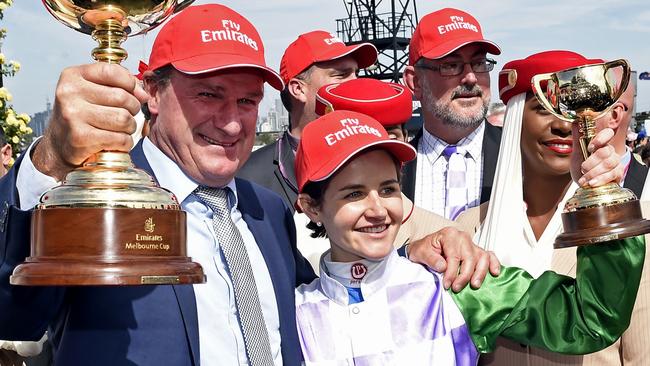
Victoria
Don't miss out on the headlines from Victoria. Followed categories will be added to My News.
No sport throws up more and better stories than racing does. No race throws up more stories than the Cup does.
It’s Spring, 1979. I’m in the Flemington stand with a cheerful old man, Jim, who’s seen every Cup since the Boer War — when the last of the “straight backs” sat bolt upright the way jockeys are shown in Georgian oil paintings.
DON’T MISS YOUR 20-PAGE MELBOURNE CUP SOUVENIR WRAP IN YOUR SUNDAY HERALD SUN TOMORROW
As a boy, Jim watched the Cup with people who’d seen Carbine win in 1890. Some old timers he knew had seen it all the way back to when Archer won the first in 1861.
There you have it, the 160-year history of the great race in three life spans.
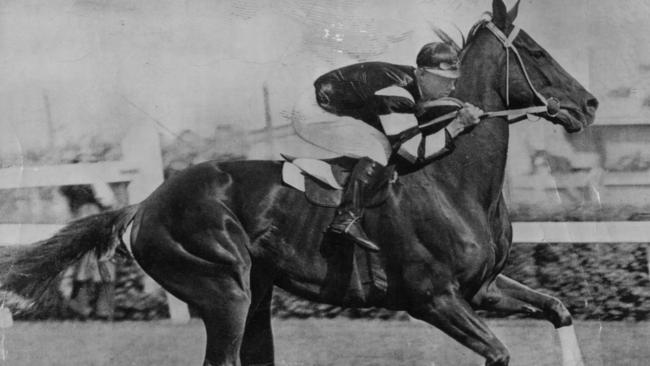
Jim points to where he saw Phar Lap unsaddled in 1930, the Cup being just one of four wins in the week that made “Big Red” a phenomenon. He saw Hall Mark and Peter Pan, Galilee and Rain Lover and dozens more across eight decades.
In 1948, he saw the handsome crock Rimfire stun the huge crowd by winning at 80-1, ridden by a 15-year-old Mallee boy, Ray Neville, so tiny that the sleeves of the “colours” were rolled up. Back home in Birchip, they still talk about it every Cup time.
Jim saw Rising Fast land the first Spring Grand Slam (Caulfield Cup, Cox Plate, Melbourne Cup) in 1954 — and, intriguingly, fail to win the Cup the following year, when bookmakers faced a ruinous pay-out on Cups doubles.
Jim saw a young Bart Cummings strapping his father’s champion Comic Court, the 1950 winner. He saw Bart train the first of his dozen Cup winners in 1965: the beautiful and brave little mare, Light Fingers, ridden by Roy Higgins.
Twenty years later, after Higgins finally lost the battle with his natural weight, I visited him at home. The man who’d ridden thousands of winners had just one picture on the wall … it was of him and Light Fingers, the one he called “Mother”.
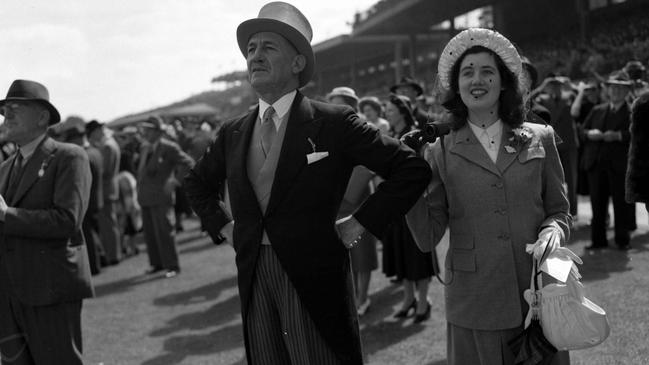
Jockeys dice with danger too much to be sentimental. Roy said he didn’t miss riding at all but he spoke of Light Fingers with something like love. Which tells us something: the best stories about the Cup, and racing, are about horses and people, not glitz and glamour.
As Michelle Payne took the longshot Prince Of Penzance to the start in 2015, she prayed to her mother, killed in a car crash when Michelle was a baby. That scene, captured by writer John Harms, opens her book and the hit film based on it.
So it should. The Cup touches people. Its grip on the Australian imagination has enchanted visitors for most of its 160 years. Mark Twain was so astonished by it in 1897 that he has been quoted ever since.
“I can call to mind no specialised annual day, in any country, whose approach fires the whole land with a conflagration of conversation and preparation and anticipation and jubilation,” Twain wrote.
The Cup’s appeal reaches high and low, touching Australians wherever they are. As someone said, to call it a horse race is like calling World War II an international incident.
Every Spring, dreaming about who can win it is a national pastime.
Leaving aside probably the greatest winner of all — triple victor Makybe Diva — not many mares win the race. Even fewer win the Caulfield-Melbourne Cups double. Bookies say the odds against any Caulfield Cup winner winning the Melbourne Cup in the same year are 12-1.
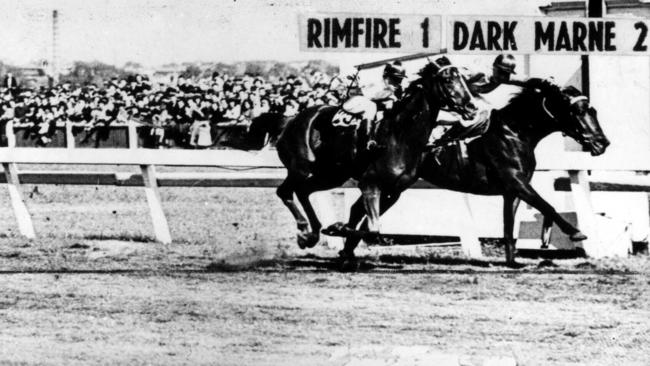
History, then, might be against a plain and unfashionably bred New Zealand mare pulling off the big double on Tuesday.
Her name is Verry Elleegant. She is named after astute New Zealand breeder Don Goodwin’s granddaughter Ellie, and in some ways the mare is about as elegant as that spelling.
She tried to bite her jockey Mark Zahra after winning the Caulfield Cup. But she is tough, and could prove as talented as the elite handful of mares who have completed the elusive double.
The most recent was Ethereal, Sheila Laxon’s dream horse, in 2001. Before that it was the giant chestnut Let’s Elope, in 1991. Like Verry Elleegant, both were Kiwis.
The only genuinely Australian mare to land the same-season double came from humble circumstances and rose above her pedigree and cost.
Her name was Rivette. She landed the big double in 1939 — a feat all the more remarkable because her battling trainer set her for the Cups the year before but had to scratch her because of injury.
Rivette’s story never loses its magic for Tony Robinson, former State politician, cabinet minister and lifelong racing fan. When he was a schoolboy in Nunawading in the early 1970s, his family befriended a retired trainer who lived in a neat brick veneer across the street. It was Harry Bamber, Rivette’s trainer.
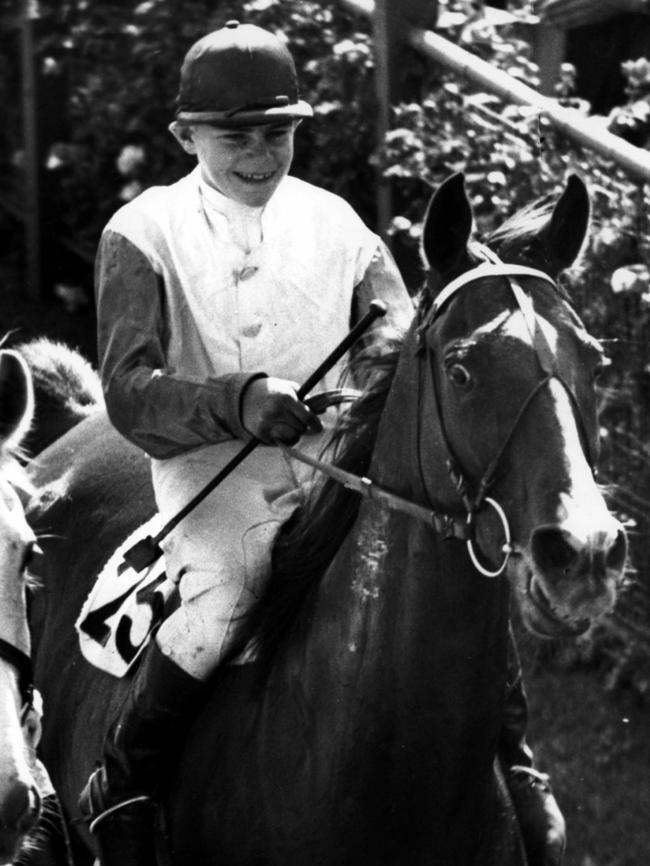

The boy fell in love with the story he heard from the polite old man, who went to church, never swore or grumbled, and kept his HD Holden in showroom condition. The only sign of his brush with glory was a framed picture in the kitchen of Rivette with her regular jockey, Teddy Preston, in Bamber’s striking rose and black diamond checks.
The story was that Bamber had punted his last couple of “quid” to get enough to send his little unregistered mare, Riv, to the stallion Ronsard in the depths of the 1930s Depression. Riv was a poor man’s thoroughbred but a brave one; she’d won the “pony Melbourne Cup”, the Ascot Thousand, in the 1920s.
Bamber was milking cows and shoeing the odd horse, a trade he knew because he’d served as a farrier in the Light Horse in World War I. He was a humble man but sure of his ability with a horse.
Rivette won enough to qualify for the 1938 Melbourne Cup but then cut her foot, so Bamber had to scratch her. He started again, replicating her preparation the following year. He also backed her at huge odds to win the Cups double, which set him up for a comfortable retirement after years of relative poverty.
The story goes that Bamber’s relatives, the Deane family, got a telegram in Canberra from cousin Harry and they backed Rivette in both Cups — a yarn often told later by Governor-General Sir William Deane, who was just eight years old in 1939.
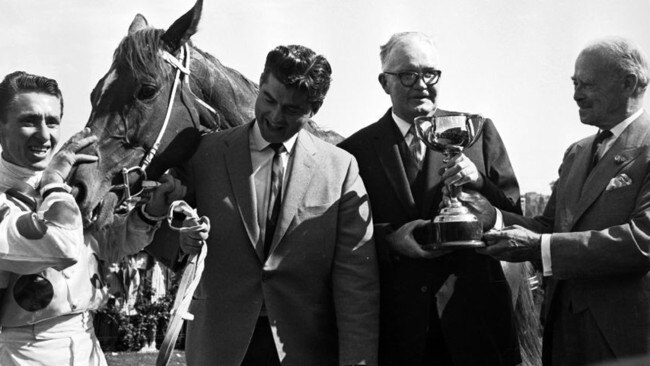
Before he died, old man Bamber gave his farrier’s hammer to the Robinsons. Tony Robinson gave it to the Racing Museum, which also has Rivette’s colours.
Harry Bamber lived just long enough to see one of the greatest Cup victories, when a young Jim Cassidy threaded Kiwi through the field from 25 lengths behind to overtake the leaders in a finish that’s still thrilling to watch. Kiwi’s owner-trainer “Snowy” Lupton had paid $1000 for the big chestnut and trained him around the farm.
Lupton wasn’t the only do-it-yourself owner. In 1984, the eccentric trainer George Hanlon was having trouble with Black Knight. The headstrong stallion was “jacking up” on the track. His multi-millionaire owner Robert Holmes a Court, a strong rider, flew in from Perth. When he saw the problem, he asked for a bigger saddle and rode the cranky beast around the track. It worked. Black Knight won.
Verry Elleegant’s present group of owners are hardly battlers. But she was bred in unpretentious circumstances on a South Taranaki family farm a long way from the corporate properties in the Waikato and the Hunter.
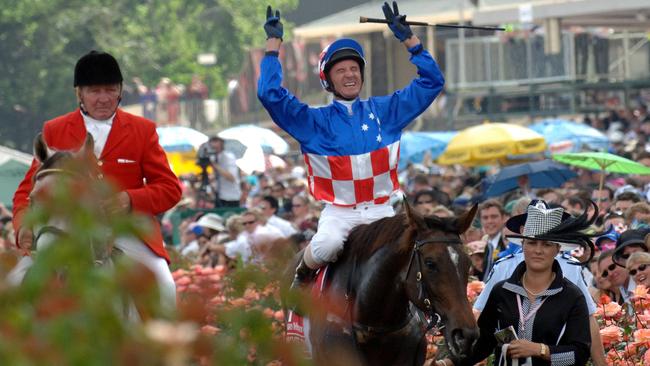
Verry Elleegant’s sire is Zed, beautifully-bred but injured as a young horse. He originally stood at stud for $600 before being banished to a mountain sheep station, where he fathered foals from Clydesdale mares. After some of his early thoroughbred offspring started to show promise, he got a second chance at showbiz, this time with the Corcoran family at Grangewilliam Stud near Waverley.
The Corcorans had already bred an unlikely Cup hero, Doriemus. The spindly stayer looked like a polo pony when the Freedmans took delivery of him in 1994. But he won the Cups double in 1995 — and would have done it again if he hadn’t struck a freak of nature named Might And Power in 1997.
Verry Elleegant is not the only elite female competitor on Tuesday. The other is Jamie Kah, finally being hailed as the best woman jockey in the world and equal to any race rider in Australia.
The wily English trainer Charlie Fellowes has booked Kah for Prince Of Arran’s third try at the Cup. History says eight-year-olds don’t win but if anyone can persuade the veteran to travel kindly for 3200m, it’s Kah.
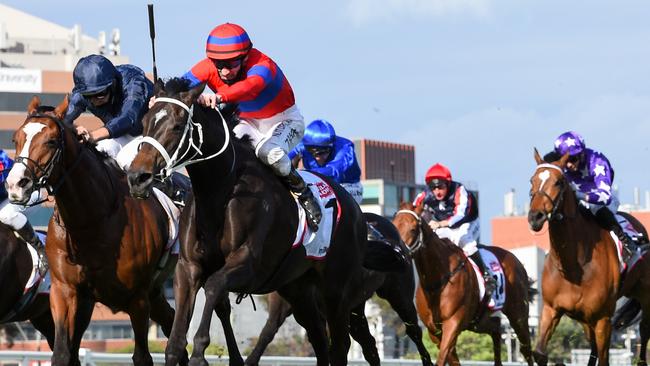
The other “local hero” this year is Surprise Baby, the Horsham stayer who won the Adelaide Cup at his sixth race start last year on the way to a slashing fifth behind Vow And Declare that made him the hard luck story of the 2019 carnival.
What punters didn’t know last year is that Surprise Baby was stuck in a hot horse float in a traffic jam outside the Flemington gates for almost an hour. His trainer Paul Preusker almost abandoned his vehicle to unload the galloper in the street and lead him onto the racecourse.
There won’t be traffic jams this time. And, unlike Prince Of Arran, Surprise Baby is still young and lightly raced. It won’t surprise if he produces another electrifying charge to the line. But he still has to get there ahead of Aidan O’Brien’s favourite Tiger Moth, its stablemate Anthony Van Dyck and another Caulfield Cup placegetter.
Many are called but only one is The Chosen One.
READ MORE:
THE CRIMES AND VILLAINS THAT ROCKED MELBOURNE

